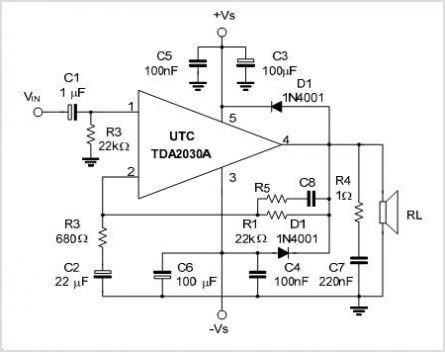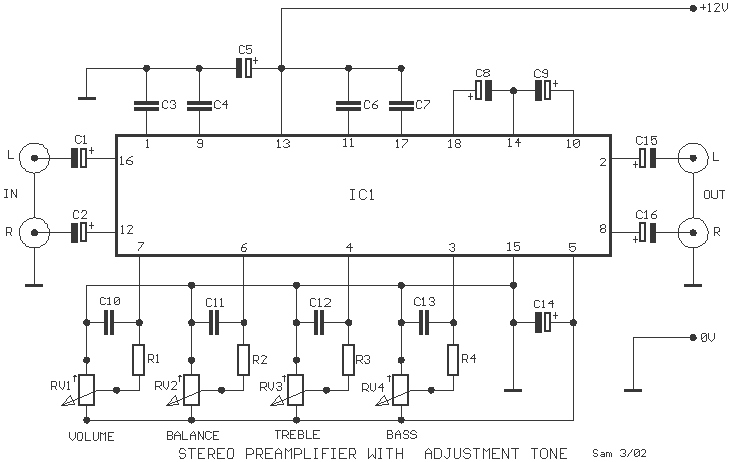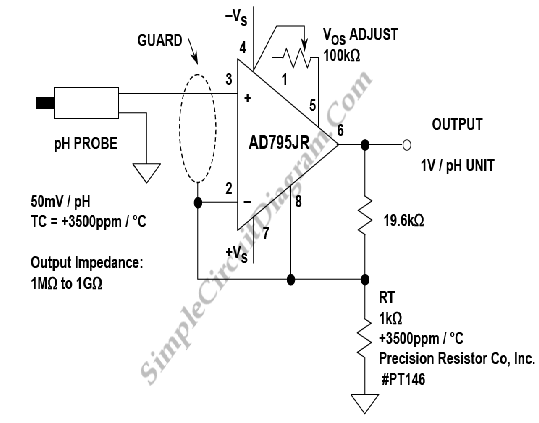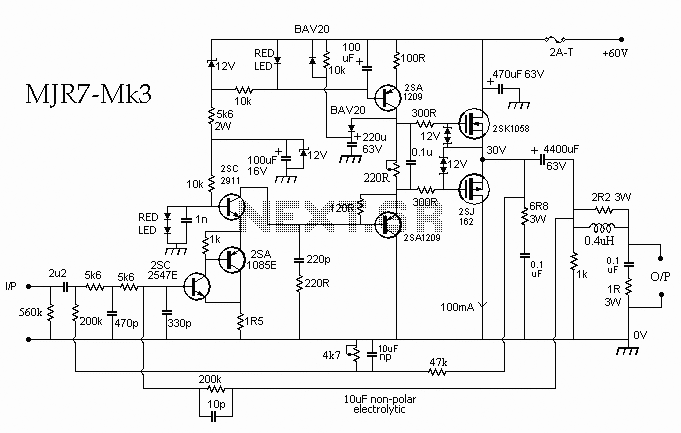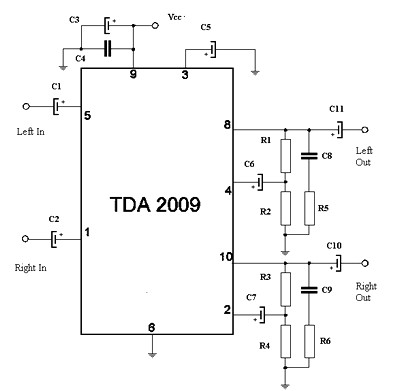
A common collector amplifier
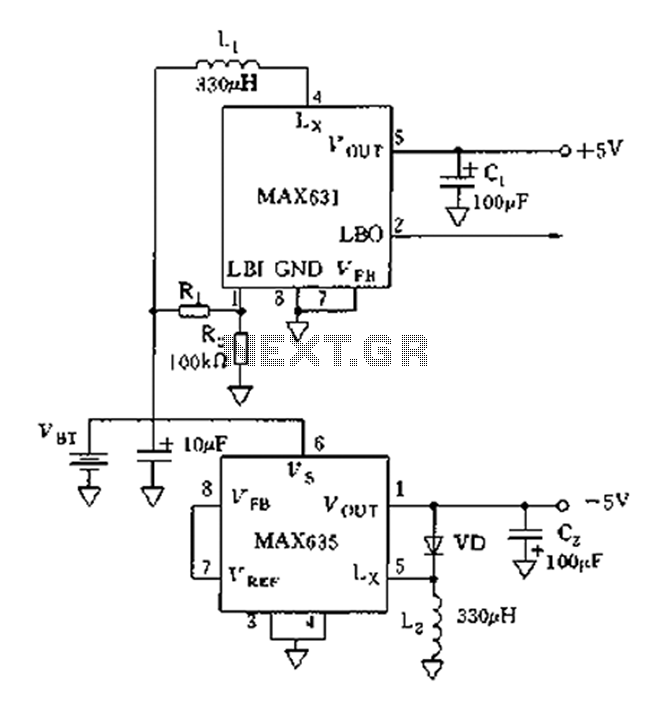
A common collector amplifier circuit structure and its key components are outlined. The composition of the common collector amplifier circuit is fundamentally similar to that of a common emitter amplifier circuit, with two notable exceptions: one is the collector resistor connected to the emitter, and the second is that the output signal is no longer taken from the emitter. In this circuit, two adjacent bias resistors are connected through the power supply to the base of the transistor. The load resistor is connected to the emitter of the transistor, while two capacitors serve the function of DC coupling. Additionally, a resistor acts as the load for the output signal. Differences also exist between NPN and PNP type transistor amplifiers, particularly regarding the power supply. Given that the power supply resistance in the transistor amplifier circuit is minimal, the AC signal behaves as a short circuit between the positive and negative terminals. The collector of the transistor is effectively grounded. The input signal is applied to the base of the transistor, while the output signal is taken from the emitter, establishing the collector as a common terminal for both input and output signals, hence the designation of this configuration as a common collector amplifier.
The common collector amplifier, also known as an emitter follower, is a three-terminal electronic circuit configuration that provides high input impedance and low output impedance. The circuit typically consists of a single NPN or PNP transistor, with the emitter terminal serving as the output. The input signal is applied to the base terminal, while the output is taken from the emitter terminal, making the circuit an effective buffer.
In this configuration, the biasing of the transistor is crucial for maintaining proper operation. The two bias resistors connected to the base are typically chosen to ensure that the transistor operates in the active region, allowing for linear amplification of the input signal. The values of these resistors can be calculated based on the desired quiescent current and the transistor's characteristics.
The load resistor connected to the emitter is responsible for setting the gain of the amplifier. The gain of a common collector amplifier is approximately equal to one, meaning that the output voltage closely follows the input voltage but with a lower output impedance. This characteristic is particularly useful in applications where impedance matching is necessary, such as driving low-impedance loads or interfacing with other circuit stages.
The capacitors in the circuit perform vital roles in AC coupling. They block any DC component of the input signal while allowing the AC component to pass through. This ensures that only the desired AC signal is amplified, preventing any DC offset from affecting the operation of subsequent stages in the circuit.
In summary, the common collector amplifier is a versatile and widely used configuration in electronic circuits, offering benefits such as impedance matching, buffering capabilities, and signal integrity. Proper selection of components and biasing techniques is essential for optimal performance in various applications, including audio amplifiers, signal conditioning, and interfacing circuits.A common collector amplifier (1) common collector amplifying circuit structure and key components of common collector amplifier circuit as shown, the key components of the comp osition and common emitter amplifier circuit is basically the same, except there are two: One is the collector resistors Mu to the emitter (indicated by Van), and the second is the output signal from the collector but no longer taken from the emitter. In this circuit, two adjacent bias resistor R l and it is through the power supply to the base of the transistor (b) power supply: Rc is the transistor emitter (e) of the load resistor; two capacitors are played through exchange compartment DC coupling capacitor effect: the resistor Rr is a minus plant output signal load resistor.
Common-emitter transistor amps, NPN and PNP type transistor amplifier Sheng also big differences between different power supply. Since the transistor amplifier circuit of the power supply resistance is very small, the AC signal is equivalent to a short circuit between positive and negative.
Equivalent AC power supply, i.e. the collector of the transistor (c) corresponds to the ground. The input signal is loaded into the base of the transistor (b) and polar (e) and the emission load resistor between Burgundy, loaded into the base of the transistor (b) and collector (c) it is equivalent to between the output signal from the transistor emitter electrode (e), it is equivalent to between transistors from the pole (e) and collector (c) emission and therefore the collector (c) for the input signal and the output signal common terminal number, it is called common collector electrode amplifier.
The common collector amplifier, also known as an emitter follower, is a three-terminal electronic circuit configuration that provides high input impedance and low output impedance. The circuit typically consists of a single NPN or PNP transistor, with the emitter terminal serving as the output. The input signal is applied to the base terminal, while the output is taken from the emitter terminal, making the circuit an effective buffer.
In this configuration, the biasing of the transistor is crucial for maintaining proper operation. The two bias resistors connected to the base are typically chosen to ensure that the transistor operates in the active region, allowing for linear amplification of the input signal. The values of these resistors can be calculated based on the desired quiescent current and the transistor's characteristics.
The load resistor connected to the emitter is responsible for setting the gain of the amplifier. The gain of a common collector amplifier is approximately equal to one, meaning that the output voltage closely follows the input voltage but with a lower output impedance. This characteristic is particularly useful in applications where impedance matching is necessary, such as driving low-impedance loads or interfacing with other circuit stages.
The capacitors in the circuit perform vital roles in AC coupling. They block any DC component of the input signal while allowing the AC component to pass through. This ensures that only the desired AC signal is amplified, preventing any DC offset from affecting the operation of subsequent stages in the circuit.
In summary, the common collector amplifier is a versatile and widely used configuration in electronic circuits, offering benefits such as impedance matching, buffering capabilities, and signal integrity. Proper selection of components and biasing techniques is essential for optimal performance in various applications, including audio amplifiers, signal conditioning, and interfacing circuits.A common collector amplifier (1) common collector amplifying circuit structure and key components of common collector amplifier circuit as shown, the key components of the comp osition and common emitter amplifier circuit is basically the same, except there are two: One is the collector resistors Mu to the emitter (indicated by Van), and the second is the output signal from the collector but no longer taken from the emitter. In this circuit, two adjacent bias resistor R l and it is through the power supply to the base of the transistor (b) power supply: Rc is the transistor emitter (e) of the load resistor; two capacitors are played through exchange compartment DC coupling capacitor effect: the resistor Rr is a minus plant output signal load resistor.
Common-emitter transistor amps, NPN and PNP type transistor amplifier Sheng also big differences between different power supply. Since the transistor amplifier circuit of the power supply resistance is very small, the AC signal is equivalent to a short circuit between positive and negative.
Equivalent AC power supply, i.e. the collector of the transistor (c) corresponds to the ground. The input signal is loaded into the base of the transistor (b) and polar (e) and the emission load resistor between Burgundy, loaded into the base of the transistor (b) and collector (c) it is equivalent to between the output signal from the transistor emitter electrode (e), it is equivalent to between transistors from the pole (e) and collector (c) emission and therefore the collector (c) for the input signal and the output signal common terminal number, it is called common collector electrode amplifier.
